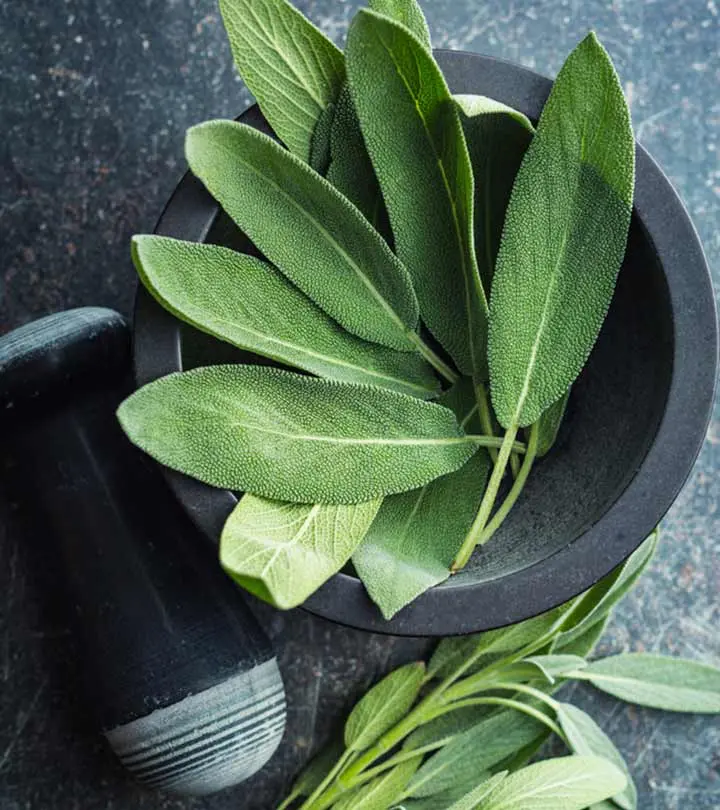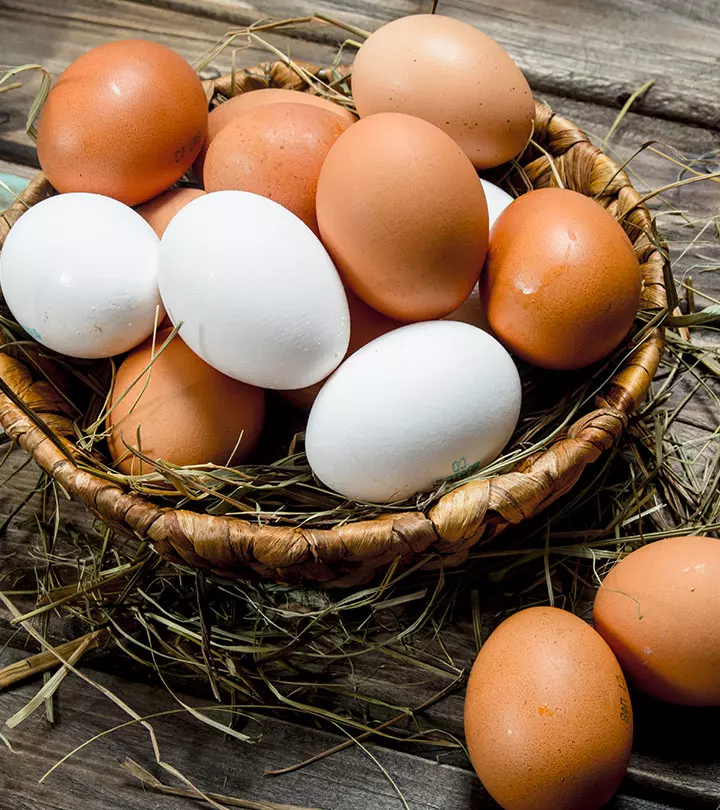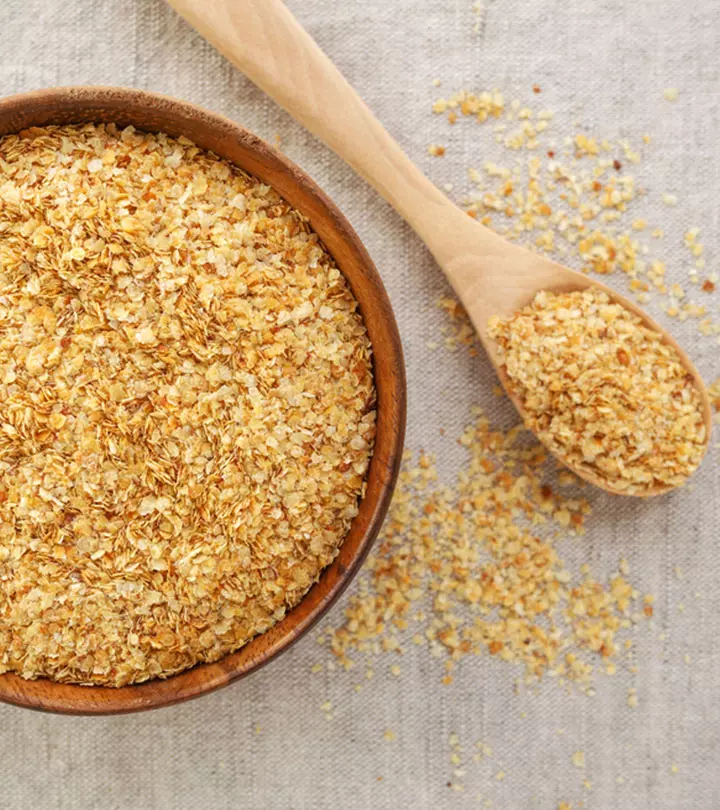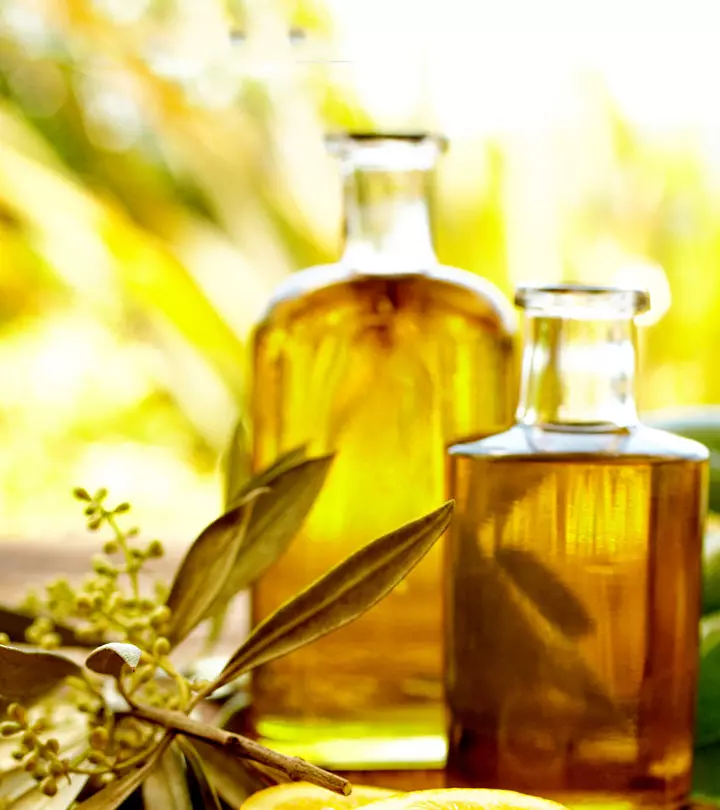9 Health Benefits Of Chervil You Need To Know About
The healing properties of this aromatic herb can rejuvenate your body and keep you healthy.

Image: iStock
Chervil’s benefits extend beyond its subtle aroma, which can transform a bland dish into a delicacy. It is an integral part of the fines herbes seasonings used in French cuisine. Chervil is believed to make people merry, sharpen their wits, rejuvenate the body, and symbolize sincerity. Its delicate flavor brings out the best in mild sauces and dishes. This herb is packed with antioxidants, minerals, and vitamins that can help boost digestion and circulation. It can also reduce inflammation and bloating. Discover more about chervil’s benefits and how to make the most of it in this article. Keep reading.
 Know Your Ingredient: Chervil
Know Your Ingredient: ChervilWhat Is It?
A culinary and medicinal herb belonging to the Apiaceae family, also called French Parsley.
What Are Its Benefits?
It has antioxidant, antimicrobial, and anti-inflammatory properties. It may boost skin and digestive health, relieve congestion, and improve blood circulation.
Who Can Consume It?
It is safe for consumption by all in moderation.
How Often?
It is generally safe to take every day, however, avoid consuming excessive amounts.
Caution
It can cause allergic reactions and digestive issues in rare cases. It should be avoided by those who are pregnant or trying to conceive.
In This Article
What Is Chervil?
Chervil or garden chervil (Anthriscus cerefolium L. Hosffm.) is a popular herb in France. Europeans and Asians usually use this herb for cooking.
Its subtle anise and licorice-like flavor make it a great option for garnishing many dishes (1).
Chervil has dainty white flowers and green, almost flower-like leaves. Several parts of this plant are edible, including leaves, stems, roots, and seeds. Its fresh, preserved, and dried leaves are often used in pesto-like preparations. Chervil is part of the finest herbs of French haute cuisine along with parsley, chives, and tarragon (1), (2).
You may also know it as French parsley due to its close resemblance to parsley. They look alike and belong to the same scientific family (Apiaceae or Umbelliferae). However, chervil has a more delicate flavor and potency than parsley, and it is not commonly used in cooking. Therefore, the cooking preferences of parsley and chervil differ (1).
Chervil is available in four varieties (2) :
- Garden chervil
- Root chervil (Turnip root chervil)
- Wild chervil (Anthriscus sylvestris)
- Bur chervil (Anthriscus caucalis)
Garden chervil is the commonly used variety of the herb. Chervil has been revered since ancient times. Its leaves were traditionally called ‘Myrrhis’ as the aroma of the herb oil extracted from the leaves resembles the biblical resin ‘myrrh.’ Many herbalists believed this herb had medicinal properties (2).
Dr. Linda Khoshaba, NMD, FABNE, says, “Chervil has been used as a diuretic, expectorant, digestive aid, skin freshener, and breath freshener. It was also thought to help with eczema, gout, kidney stones, and pleurisyi Inflammation of the tissues that divide the lungs from the chest cavity and causes chest pain. Also known as pleuritis. .”
 Did You Know?
Did You Know?Chervil is rich in minerals, vitamins, and bioactive compounds, which may help relieve many disorders. Learn more about chervil’s nutrient profile in the next section.
Key Takeaways
- Chervil has a lot of antioxidants, minerals, and vitamins. It can help boost digestion and blood circulation and can also reduce inflammation and bloating.
- It can help fight various infections, relieve congestion, and reduce premenstrual bloating.
- If you want to add chervil to your diet, you can try infusing it in vinegar, use it as a garnish or seasoning, or add it to sauces and mild cheeses.
- Chervil can cause side effects like throat itching, voice change, uvula swelling, and diarrhea.
Nutritional Information Of Chervil
A 100 gram of dried chervil contains (3):
| Calories | 237 kcal |
| Protein | 23.2 g |
| Carbohydrate | 49.1 g |
| Total lipids (Fat) | 3.9 g |
| Sodium | 83 mg |
| Potassium | 4740 mg |
| Calcium | 1350 mg |
| Iron | 32 mg |
| Magnesium | 130 mg |
| Phosphorus | 450 mg |
| Zinc | 8.8 mg |
| Manganese | 2.1 mg |
| Selenium | 29.3 µg |
| Dietary fiber | 11.3 g |
| Vitamin C | 50 mg |
Flavonoids are the major compounds present in chervil. It is also a good source of essential oil (0.3% in the fresh herb, 0.9% in the seeds). The oil contains compounds such as methyl chavicol (estragole) and hendecane (undecane) (2).
Chervil’s diverse and rich nutrient profile makes it beneficial for our health.
Potential Health Benefits Of Chervil
1. Good Source Of Antioxidants
Chervil contains powerful antioxidants like phenolic compounds, flavonoids, and vitamin C. These antioxidants are necessary for reducing early signs of aging, such as fine lines and wrinkles. Additionally, they reduce oxidative stressi An imbalance between free radicals and antioxidants in the body that lead to allergic diseases, such as atopic dermatitis and asthma. and free radical levels. The antioxidants also promote healthy skin and organ function (2), (4), (5), (6).
2. May Fight Against Infection
Chervil contains bioactive compounds that can inhibit pathogenic bacteria such as Staphylococcus aureus and fungi such as Candida albicans. Pneumonia is associated with these pathogens. Chervil’s antimicrobial activity explains why it is used in traditional medicine to treat pneumonia (7).
3. May Reduce Inflammation

Chervil has anti-inflammatory properties and can effectively treat inflammation related to colds and flu. Chervil leaves may also help manage eczema symptoms like redness, itching, and swelling (2).
4. May Promote Digestion

Chervil is rich in dietary fibers. Dietary fiber helps maintain digestive health, improves fecal frequency and weight, and reduces transit time for digesting and excreting food (8).
5. May Act As Stimulant
Chervil is thought to be a mild stimulant. It may lift your mood and temporarily stimulate physiological activity (2).
6. May Relieve Congestion
Chervil is considered a good expectorant as it promotes mucus secretion from the respiratory system. This makes it easier to clear airway obstruction and reduce congestion by eliminating the secretion through coughing (2), (9), (10).
7. May Reduce Premenstrual Bloating
Chervil works well as a diuretic (it helps the body eliminate excess fluid and salt). The herb increases urine output and may help reduce fluid retention and bloating during menstruation or pre-menstruation (2), (11).
8. May Boost Skin Health
Chervil leaves are useful for inflammatory skin conditions such as eczema, psoriasis, Systemic Lupus Erythematosus (SLE), and acne
. Consuming chervil juice can improve and heal the skin from wounds and scars. Fresh chervil leaf infusions are used as skin cleansers and lotions. Applying its juice may also reduce blemishes (2).
9. May Promote Circulation

Taking chervil with herbal teas may improve blood circulation. It is a rich source of iron and zinc and helps prevent anemiai A condition that causes extreme fatigue, paleness, and dizziness due to low hemoglobin (lack of red blood cells) in the body. . Chervil has anti-hypertensive properties and can ease the symptoms of high blood pressure. The herb is also used as a blood purifier (2).
 Trivia
TriviaChervil’s health benefits are still being studied. Nonetheless, such an exquisite, subtle spice cannot be overlooked. Find out how you can incorporate it in your diet below.
How To Add Chervil To Your Diet

- Infused Vinegar: Khoshaba says, “To keep chervil’s taste, you can put it in white wine vinegar and keep it for a long time. To add flavor to food, it doesn’t need a lot of other things. This makes it a low-calorie way to spice up your food.”
- Garnish: Chervil leaves or whole sprigs are delicate and can be used to garnish your creamy soups, butter sauces, scrambled eggs, and omelets.
- Seasoning: Chervil is most commonly used in classical French herb seasoning fines herbes. You can also use it on its own to flavor mild dishes.
- Sauces: Chervil is also an excellent addition to light sauces, mild cheeses, mixed herb pesto sauce, and herb butter.
Andrea, a blogger, shared her experience of using chervil on her personal blog: “I do know chervil would be a good herb to preserve in the form of herbed butter! Herbed butter is also called compound butter. You can make it with any mix of herbs you have in your garden. It’s great to have in the refrigerator to use when making scrambled eggs, melt it over steamed vegetables, use it in sauces for pasta, melt a pat on top of grilled steak or fish, or just simply spread it on warm bread (i)!”
Keep the following tips in mind when cooking with chervil:
- Chervil has a mild flavor that is easily lost when dried or heated.
- Add chervil at the end of the cooking process to retain its flavor.
- It is better to use fresh leaves for cooking and garnishing.
Therefore, you need to be careful when using chervil. When overcooked, chervil loses its subtle, delicious flavor. However, watch out for possible risk factors. Not everyone will benefit from chervil. Read on for the reasons.
Chervil can be incorporated into various dishes to add a beautiful flavor. Check out the next section for some delicious recipes you can try at home!
Easy Chervil Recipe To Try
Chervil Soup

Ingredients
- 3 cups of chopped chervil
- 500 ml of vegetable stock
- 1 cup of water
- 1 tablespoon of oil or butter
- 2 leeks, white part sliced
- 2 potatoes, peeled and diced
- 1 cup of cream
- Salt and pepper to taste
How To Prepare
- Heat the oil or butter in a saucepan and sauté the leeks until soft.
- Add the stock and the chopped potatoes. Simmer until the potatoes are cooked through.
- Add the chervil, switch off the heat, and let it cool slightly before blending it to a purée.
- Add the cream and stir the soup.
- Season with salt and pepper.
- Sprinkle chervil leaves on top and enjoy.
Possible Side Effects And Allergies

Chervil has been designated as GRAS (Generally Recognized As Safe), and the FDA considers it safe for culinary use. However, since studies evaluating the effects of excess consumption of chervil have not been conducted, it is advised to avoid eating too much of it (8).
Chervil allergies are extremely rare. However, a 43-year-old patient reported chervil allergy symptoms such as throat itching, uvula swelling, voice change, and diarrhea. Researchers identified a unique 14 kDa thermostable allergen in chervil, which may cause allergic reactions(12). Therefore, if you notice any adverse reactions after consuming chervil, contact your healthcare provider.
However, if you are looking for Chervil’s substitution, the following section is for you.
Substitutions For Chervil
Chervil, with its distinct flavor, is a unique herb that adds a special touch to dishes. However, in situations where it is not available, there are other herbs that can be used as substitutes. For example:
- Parsley: It is a versatile substitute for chervil in most dishes, offering a milder flavor profile. While it may not replicate the nuanced anise notes, it certainly adds its own unique touch.
- Tarragon: It has a stronger, more pronounced flavor with hints of licorice, similar to chervil. However, use it sparingly as its flavor can be overpowering. You can also combine it with parsley or dill to create a flavor profile closer to chervil.
The Final Word
Chervil is a widely used French herb with a mild flavor. It belongs to the parsley family and is a popular garnish that can elevate the taste of mild dishes and is a great addition to herb blends, seasonings, and infused herb vinegar. It is loaded with antioxidants, minerals, vitamins, and many bioactive compounds. The benefits of chervil include reducing inflammation and bloating, fighting infection, improving respiratory health, and improving digestion. You can have it with herbal tea or tisane, add it to soups and salads, or use it in marinades. Since it easily loses flavor to overheating, be careful when using it in the dishes. There is a rare chance you might be allergic to chervil. However, consult your doctor if you notice any symptoms.
Frequently Asked Questions
What does chervil taste like?
Chervil tastes mild and its flavor resembles that of anise or licorice.
Is chervil the same as Italian parsley?
No, chervil is not the same as Italian parsley. However, both these herbs have a similar appearance and a mild flavor.
Is chervil the same as flat-leaf parsley?
No, chervil is not the same as flat-leaf parsley. However, they have a similar appearance. That said, chervil tastes milder than flat-leaf parsley. Understanding parsley benefits alongside chevril allows you to determine the right distinction between the two and you make an informed decision about your health.
Where is chervil grown?
Chervil is mostly grown in Russia, southern Europe, and central Asia.
Is it easy to grow chervil?
Yes, chervil is easy to grow. The seeds of chervil can be sown in damp soil and require partial shade. The herb takes approximately 6-8 weeks to grow.
Illustration: What Is Chervil? Health Benefits, Side Effects, And More

Image: Dall·E/StyleCraze Design Team
Discover the incredible health benefits and nutrient facts of chervil. Click on this video to learn about its medicinal properties, culinary uses, and why it is a must-have in your kitchen.
Personal Experience: Source
StyleCraze's articles are interwoven with authentic personal narratives that provide depth and resonance to our content. Below are the sources of the personal accounts referenced in this article.
i. Checking in on your Herb Garden!https://harmonyvalleyfarm.blogspot.com/2019/08/checking-in-on-your-herb-garden_14.html
References
Articles on StyleCraze are backed by verified information from peer-reviewed and academic research papers, reputed organizations, research institutions, and medical associations to ensure accuracy and relevance. Read our editorial policy to learn more.
- Chervil
https://www.sciencedirect.com/science/article/pii/B9781855737211500122 - Chervil: A Multifunctional Miraculous Nutritional Herb
https://scialert.net/fulltext/?doi=ajps.2012.163.171 - Food Data Central
https://fdc.nal.usda.gov/fdc-app.html#/food-details/171318/nutrients - In vitro antioxidant activity of Anthriscus cerefolium L. (Hoffm.) extracts
https://www.sciencedirect.com/science/article/abs/pii/S0378874199001713 - ANTIOXIDANT ACTIVITY OF DIFFERENT COMPOUNDS FROM ANTHRISCUS CEREFOLIUM L. (HOFFM.)
https://www.actahort.org/books/597/597_26.htm - The Role of Antioxidants in Human Health
https://pubs.acs.org/doi/full/10.1021/bk-2011-1083.ch001 - Extract of Herba Anthrisci cerefolii: Chemical Profiling and Insights into Its Anti-Glioblastoma and Antimicrobial Mechanism of Actions
https://www.mdpi.com/1424-8247/14/1/55 - Dietary fiber and digestive health in children
https://academic.oup.com/nutritionreviews/article/75/4/241/3747768?login=true - Mucolytics, expectorants, and mucokinetic medications
https://pubmed.ncbi.nlm.nih.gov/17594730/ - Systematic review of randomised controlled trials of over the counter cough medicines for acute cough in adults
https://www.ncbi.nlm.nih.gov/labs/pmc/articles/PMC65295/ - Fluid Retention over the Menstrual Cycle: 1-Year Data from the Prospective Ovulation Cohort
https://www.ncbi.nlm.nih.gov/labs/pmc/articles/PMC3154522/ - Garden Chervil ( Anthriscus cerefolium), a novel food allergen
https://www.worldallergyorganizationjournal.org/article/S1939-4551(20)30215-5/fulltext#relatedArticles
Read full bio of Dr. Pallavi Srivastava
Read full bio of Payal Karnik
Read full bio of Ravi Teja Tadimalla
Read full bio of Aparna Mallampalli




























Community Experiences
Join the conversation and become a part of our empowering community! Share your stories, experiences, and insights to connect with other beauty, lifestyle, and health enthusiasts.